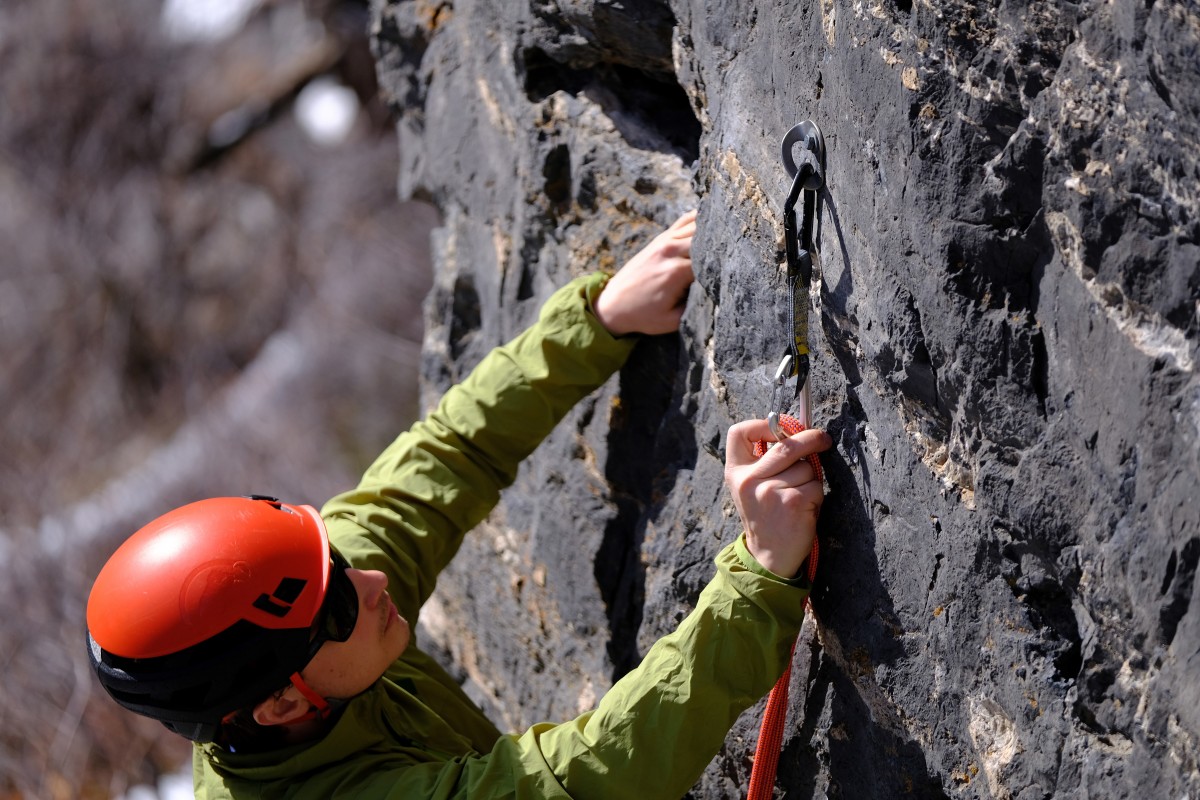We bought nine of the best-selling carabiners and tested them on alpine routes, crags, and sport multi-pitch routes. Our team of experts has over 40 years of combined experience climbing, designing alpine climbs, and conducting rescues with Yosemite Search and Rescue.
As tested, the best carabiner for most climbers is the CAMP Photon Wire (weight: 30 grams) . It clips easily into anchors or bolts. Our testers liked its lightweight, yet fully functional size.
Best Overall Carabiner
We think the CAMP Photon Wire is the best carabiner on the market today, regardless of price. The CAMP Photon Wire offers incredible value for money. Given its high scores across a variety of comparison criteria, it’s priced at about half the price of many of the other top-rated carabiners. That means you can buy twice as many of these carabiners for the same amount of money as other highly rated models. We also really like its light weight and crisp, easy-to-use action. The wide, flat “basket” of the carabiner can accommodate several ropes or knots at once, without interfering with the full opening of the shutter.
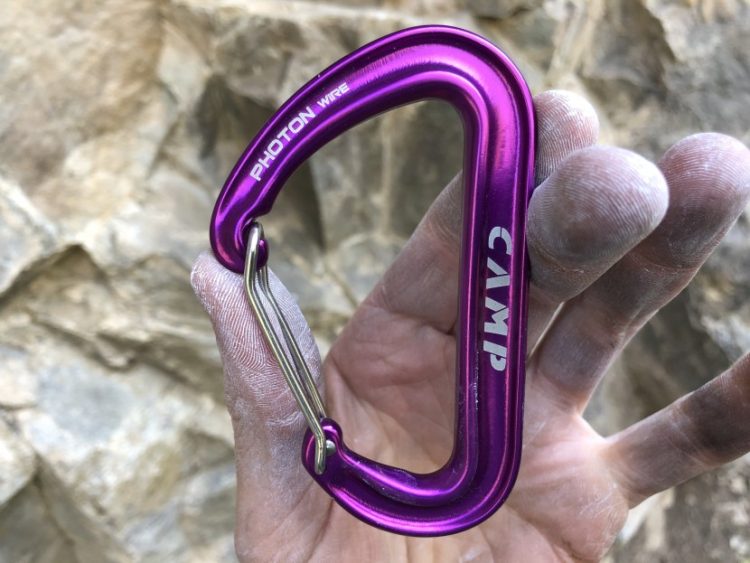
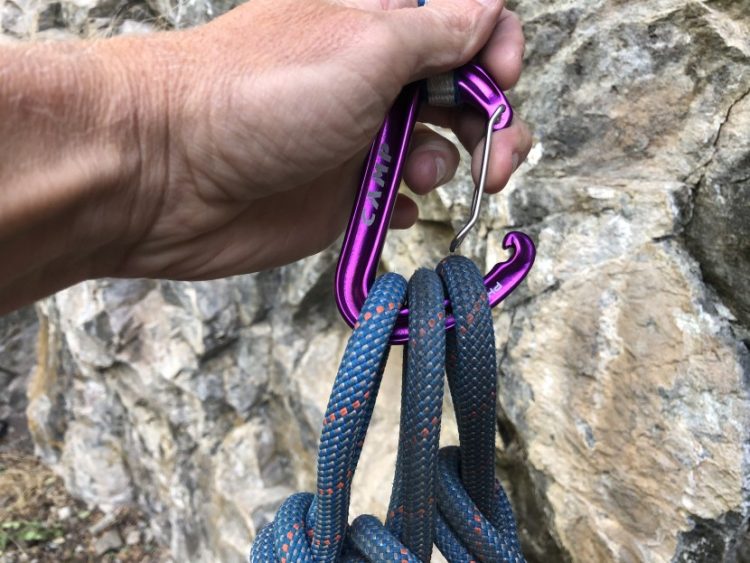
The best carabiner for an easy way to secure
If you’re looking for a larger, even easier-to-clip carabiner, the Wild Country Helium 3 Carabiner (weight: 38 grams) is a great option.
The Wild Country Helium 3 stands out for its no-notch design, which prevents the carabiner from snagging on quickdraws, ropes, and slings. It also has one of the lightest, smoothest locks we’ve ever used; The Helium 3 is a joy to climb.
One improvement we’d like to see is a keylock system on the nose, which eliminates the protrusion where the end of the wire bolt is secured, as implemented on the Wild Country Helium 3.0. Of course, all models with such a system are significantly more expensive, and the hook on the Photon Wire nose has a low profile compared to other similar ones. We also encountered problems with the bolt “sticking”, so it is important to keep the carabiners clean and regularly lubricated for optimal performance. But if you’re looking for the best functionality at a virtually unbeatable price, the CAMP Photon Wire is your best bet. It’s great for long quickdraws, hanging friends, and even regular thick quickdraw lines. However, the Wild Country Helium 3.0 is also worth considering due to its recessed latch design and smooth bolt action.
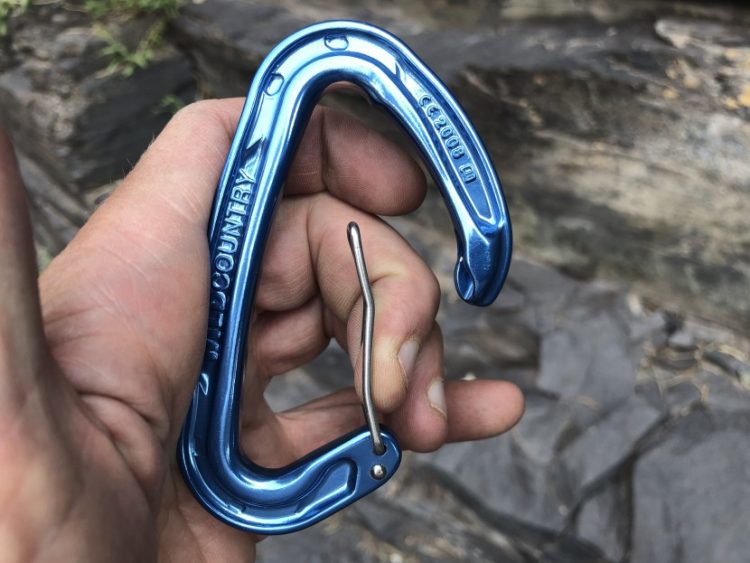
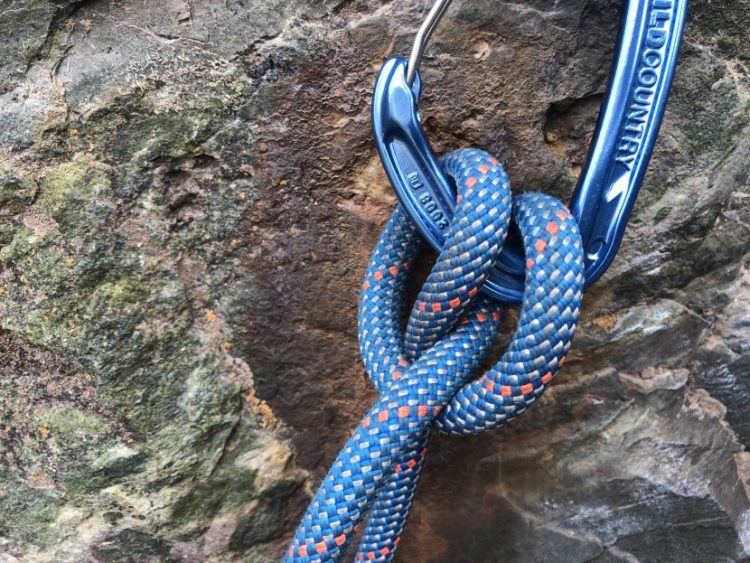

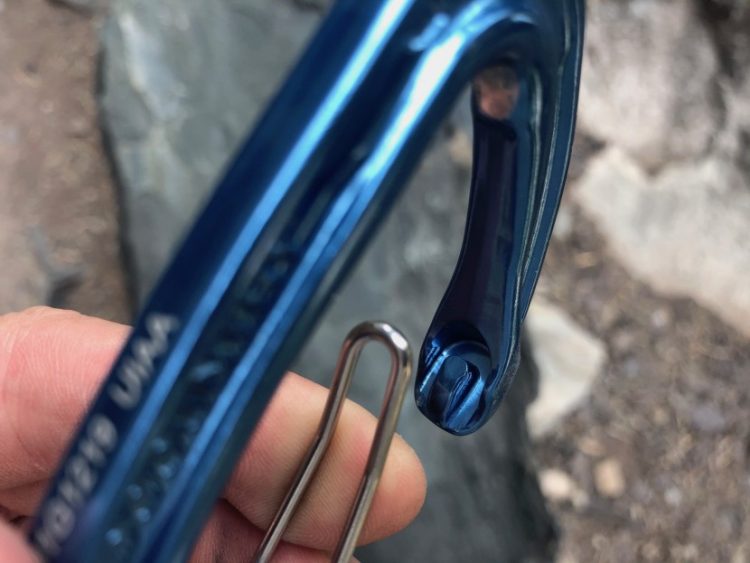
The best ultra-light carabiner
The Black Diamond company has released the carabiner Miniwire (weight: 23 grams), which replaced the Oz model as the smallest and lightest fully functional carabiner in their line. This tiny carabiner might resemble a keychain, if it weren’t for the fact that it meets all the strength requirements necessary for safe use in rock climbing. Miniwire is truly tiny and almost weightless, making it a godsend for climbers and traditional climbers looking to minimize the weight and bulk of their gear. It’s also one of the most affordable carabiners in this review, so the desire to lighten your gear won’t result in significant expenses.
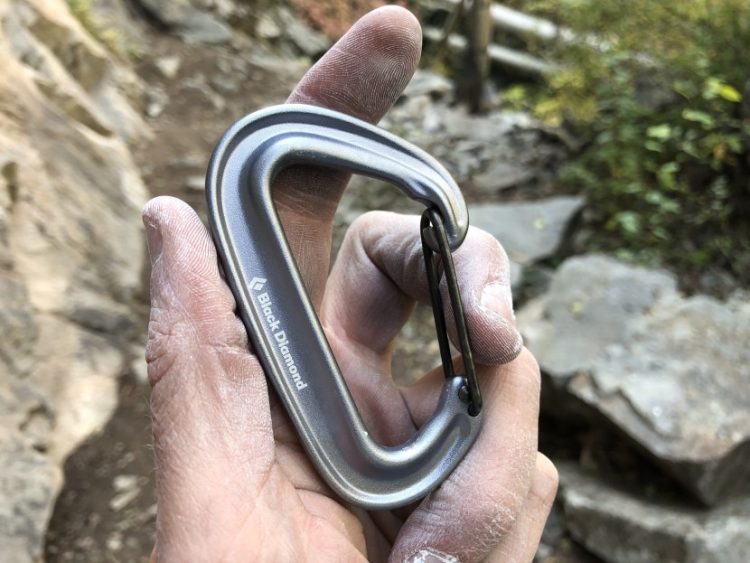
However, there may be problems with this carabiner: due to its small size, the carabiner is more difficult to operate, and the process of clipping and unclipping becomes less convenient. This size is also not suitable for ice climbing, snow climbing, or winter mountaineering when gloves are used. As with the model BD Hotwire, the bolt spring here is a little stiffer than many other carabiners with softer clipping. However, for those who value compactness and lightness, the compromise will be justified. But for rock climbing at the limit of capabilities, we still recommend full-size carabiners, such as Wild Country Helium 3.0, which are easier to work with on the route.
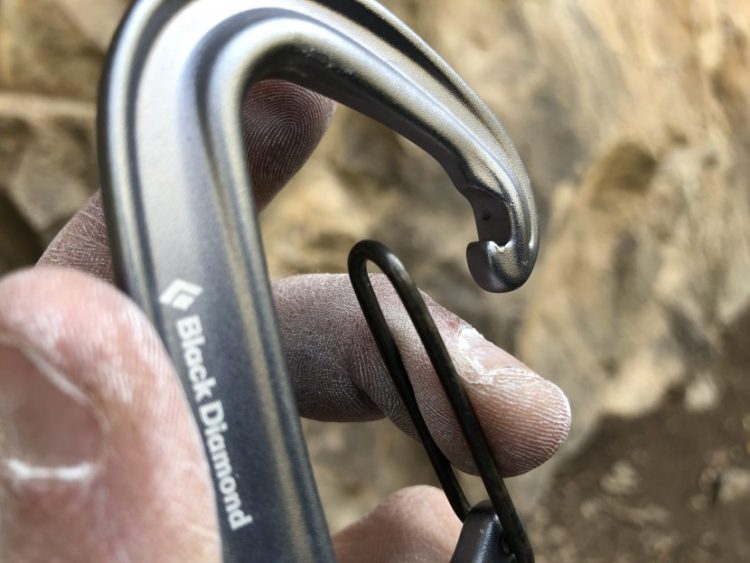
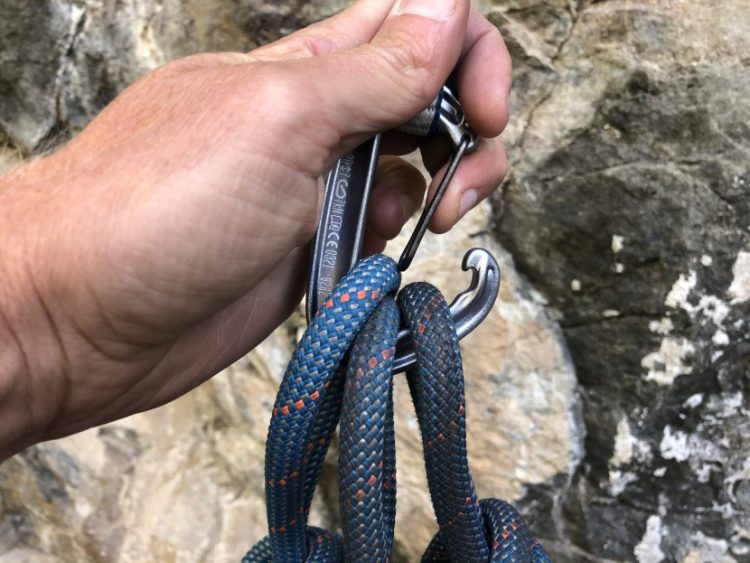
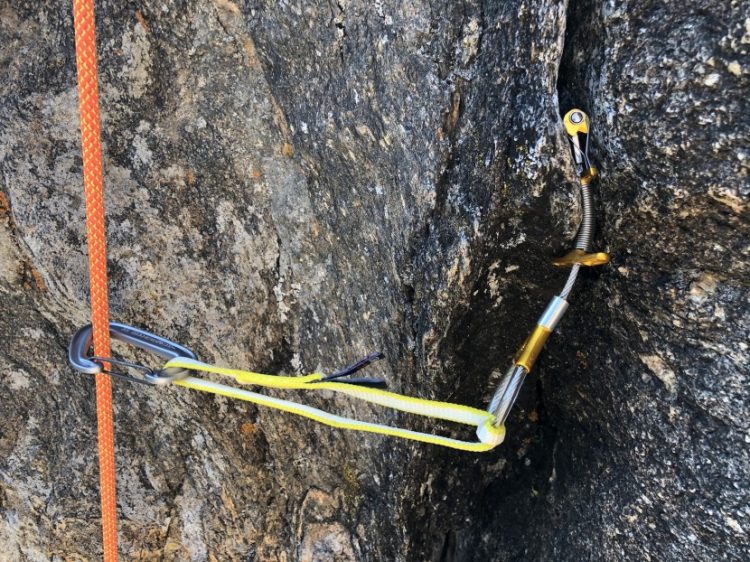
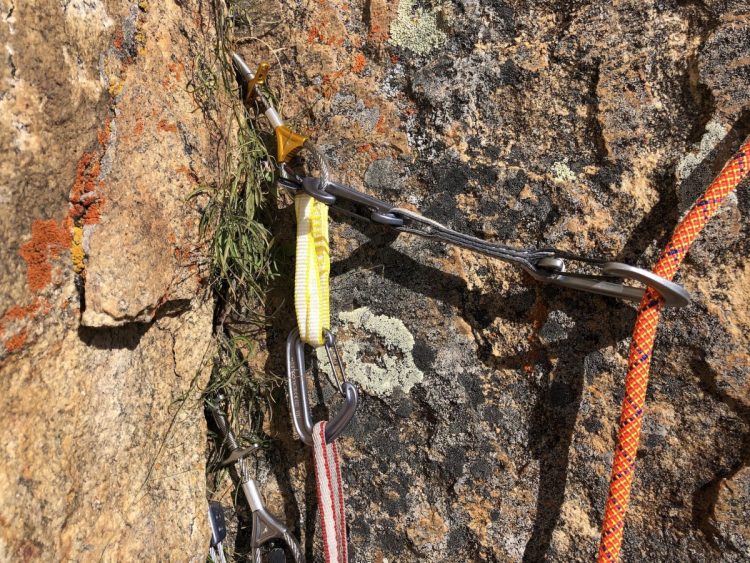
How we conducted testing
Testing carabiners happens every time we go climbing. We spend hours of research to identify the best models of wire snap carabiners on the market, then we buy them and use them in our work: on long quickdraws, for hanging caches and friends – all this allows us to objectively evaluate the use of carabiners in real conditions. Despite the presence of excellentsolid gate arabiners, the lighter weight of wire models makes them preferable for most trad climbing tasks.
Our testing is broken down into five main criteria, with corresponding weights in the final score:
Clipping — 25%
Unclipping — 20%
Weight — 20%
Gate Clearance — 20%
Handling — 15%
Gate Opening Clearance
When climbing multi-pitch routes, setting up stations, guiding, or climbing in a three-person group, the size of the carabiner basket and the width of the gate opening can have a significant impact on its usability and effectiveness. The first thing to look at to determine how wide a carabiner’s gate can open is the manufacturer’s stated opening clearance, which for the purposes of this review ranges from 21mm to 27mm.
However, a wide gap alone does not guarantee that there is enough space inside the carabiner to comfortably place the rope. The most accurate way to estimate this parameter is to check how many ropes can fit into one carabiner at a time, which directly reflects the conditions that climbers and mountaineers face in real situations.
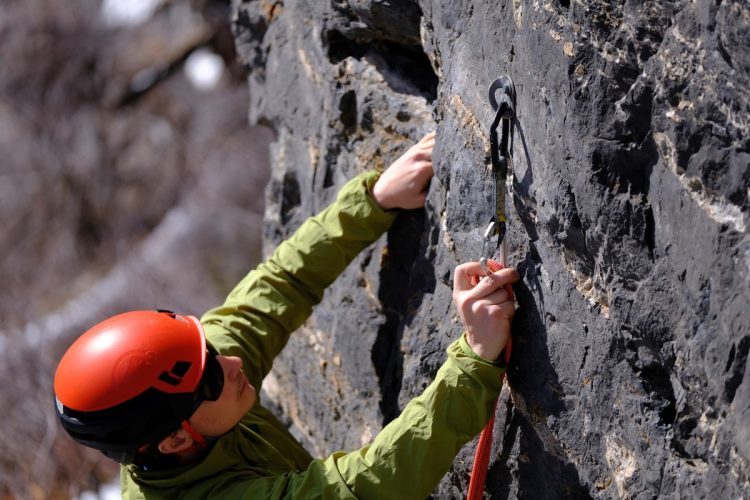
After comparing the carabiner latch gap values, we ran several tests with each model in this review to evaluate this parameter. This is the so-called “three-rope test” (can the carabiner hold three “eights” on bending and still open fully?) and the “bowline” test (does the bolt open with one bowline inside the carabiner).
The full-size Black Diamond Hotwire and CAMP Photon Wire have the widest opening clearances and deep, flat baskets that allow up to three knotted ropes to be placed side by side without having to stack them or lock the bolt. Petzl Ange L and Wild Country Helium 3 also hold three knots and have wide openings, but require a bit of juggling with the ropes to position them so that the gate can still open. As you might expect, the smallest carabiners have the smallest gaps, but all of the carabiners we tested handled the bowline knot without any problems.
Ease of use
How easy is to use the carabiner is the last parameter we assessed. A carabiner that seems large enough in the store may be too small on the trail when your hands are tired and swollen. This mainly depends on the size of the model, although factors such as the shape of the nose and the width of the body also play a role. Some forged models also have additional features, such as ribbed surfaces or an ergonomic shape, making them easier to hold and less likely to drop.
In general, the larger the carabiner, the more comfortable it is to use. The leaders in this category are the CAMP Photon Wire and Wild Country Helium 3. They are large enough to comfortably hold even with gloves, which is especially important when ice climbing or on big walls. The Photon has a slightly thinner nose, which gives it the advantage of being easier to fit into tight spaces than the Helium 3.
Conclusion
Rock climbing is a sport that requiring large quantitiesand gear, and trad climbing (and mountaineering) especially. We hope that our review has helped you understand what to look for when choosing gear and has given you a good starting point – whether you are buying your first set or replacing old gear that is already twenty years old.
Tested gear: Cam McKenzie Ring & Andy Wellman
Source of the article: alp.org.ua
Photos and materials from the site were used: www.outdoorgearlab.com

